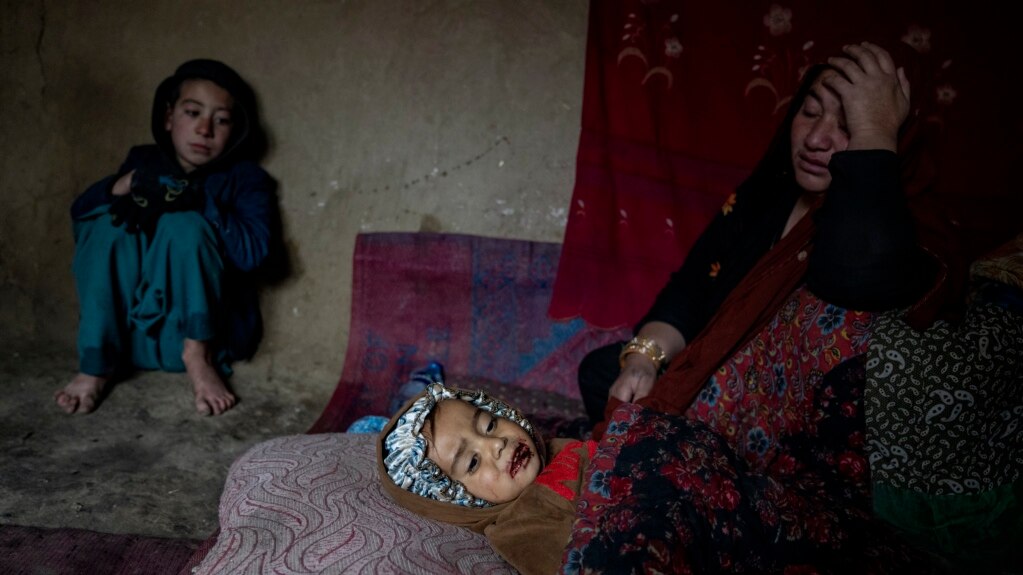The desert in the mountains of eastern Afghanistan is filled with hundreds of thousands of people. Some live in tents. Others live out in the open after they were forced to leave neighboring Pakistan.
More than 40 years of war, violence and poverty have turned 6 million Afghans into refugees. Another 3.5 million people are displaced within the country of 40 million. Many were driven from their homes by war, earthquakes and drought.
Afghanistan’s economy collapsed after the Taliban returned to power following the withdrawal of the United States and NATO allies in 2021. Now, two-thirds of its population depends on international aid to survive.
Displaced Afghans live in camps around the country. They do not have enough food or firewood for heat in the winter. Women and children often turn to begging. Others marry off their young daughters to families willing to pay them money.
In May, for example, 15-year-old Shamila was married at a camp for internally displaced people outside Kabul. She stood in a bright-red dress among the women of the family who congratulated her. But the girl was unhappy.
“I have no choice. If I don’t accept, my family will be hurt,” said Shamila, whose father did not give the family’s name because he feared the Taliban. The groom’s family is giving her father money to pay off debts taken to support his wife and children.
“I wanted to study and work, I should have gone to school,” Shamila said. “I have to forget all my dreams…so at least I can help my father and my family a little and maybe I can take the burden off their shoulders.”
Last year, Pakistan decided to deport Afghans who entered the country illegally. Many Afghans lived for years in Pakistan. They were afraid of continuing conflicts at home. When Pakistan’s order was announced, hundreds of thousands feared arrest and fled back to Afghanistan. The Afghans said Pakistani officials often prevented them from taking anything with them.
Their first stop has been the camp in Torkham, where they might spend days or weeks before Taliban officials send them to another place. With little food and little to protect them from the mountain cold, many in the camp are sick.
In a camp at the foot of a mountain, 55-year-old Farooq Sadiq sat with his wife and children on the ground among some of their belongings. Sadiq said he had been living in the Pakistani city of Peshawar for 30 years and owned a home there. Now they had nothing, not even a tent. He said they had been sleeping on the ground for the past eight nights.
“I have nothing in Afghanistan, no house, no place to live, not enough money to buy a house,” he said. He hopes to settle somewhere in Afghanistan and get a visa to Pakistan so he can go sell his home there to use the money for his family.
The deportations from Pakistan have greatly increased the large numbers of Afghans who try to migrate into Iran, hoping to find work.
Every month, thousands cross into Iran at the border near Zaranj. At night, with the help of smugglers, they climb over the border wall and jump to the other side.
Mostly young men, from age 12 to their 20s, flee Afghanistan this way. They plan to work in Iran and send money home to their families. Many are caught by Iranian border guards and sent back.
Others take a longer trip by car through mountains and deserts on Afghanistan’s southwestern border through Pakistan to reach Iran. There is no border wall there. But fighters from the Sunni militant group Jundallah often attack the migrants, killing or kidnapping Shiites among them.
Over several months, Associated Press photographer Ebrahim Noroozi traveled across Afghanistan from its eastern border with Pakistan to its western border with Iran to report their stories.
I’m Mario Ritter, Jr.
Ebrahim Noroozi reported this story for the Associated Press. Hai Do adapted it for VOA Learning English.

